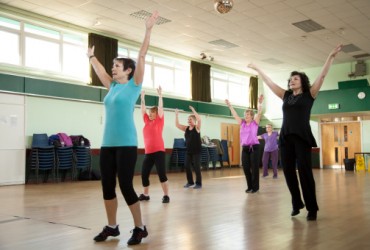Heart failure is one of the most severe heart conditions of all. It is a condition in which the heart can’t pump blood effectively to the rest of the body. In the past, heart failure patients were often advised not to exercise. Now with research and findings, it is very clear that appropriate exercise for heart patients under the doctor’s direction is good to manage the disease. The most recent finding using MRI shows that exercise benefits for the heart are unquestionable.
American Heart Association says that exercise is very important if you’ve had a heart attack, balloon angioplasty or bypass surgery. Exercise along with good diet can decrease the risk of further problems and it will also help you breathe easily and will not cause any additional damage to the heart muscle. Congestive Heart Failure (CHF) is a deteriorating illness that often develops after a heart attack as a result of dead or damaged heart tissue. As the heart heals, the scars left behind can lead to stretching, thinning or enlargement of the heart.
Before you start an exercise regime get your doctors approval about the kind of exercise suitable for you and your limitations. Your doctor will recommend an exercise heart rate that is considered safe and appropriate for you. This may involve taking an exercise stress test to determine your peak heart rate. Always stay within your physician’s recommendations and your own comfort zone. If you plan to workout with a trainer, let him know about your condition.
One of the most important components of an exercise program for heart patients is aerobic exercise which involves using large muscle groups rhythmically for prolonged periods, such as in walking, jogging, or biking. Aerobic exercises boost the heart’s efficiency and pumping ability. Walking is a good choice, particularly if you have been inactive. Exercise machines like stationary bikes, stair-climbing machines, treadmills, and rowing machines also offer good aerobic workout. It’s always good to start your exercises slowly, do not push yourself too hard or too fast. Instead, pace yourself and be regular. Start with 15 minutes three times a week and slowly build your workout time and frequency. Increase the time gradually to 30 minutes to 60 and you can include swimming or cycling progressively, if it’s your interest. You can also accumulate your 30-plus minutes of aerobic exercise in several 10- or 15-minute bouts.
Preparing for cardio exercises
Warm-up before starting a cardio-exercise by easy walking and stretching for 5 to 10 minutes as it prepares your muscles and gets your heart pumping gradually and to end your workout, cool down by strolling and stretching for at least 5 minutes.
Don’t exercise outdoors when it is too cold, hot, or humid as extreme temperatures can hinder with circulation, make breathing difficult and cause chest pain. Stop exercising immediately and consult a doctor if you have: Pain or pressure anywhere from you neck to your navel, dizziness, an abnormal heart rhythm, unusual shortness of breath, or Nausea.
You can integrate strength training to your cardio as it reduces the heart rate, and the blood-pressure responses to upper-body workouts such as lifting and it can decrease the demands on your heart during workout and leisure-time activities. Heavy load nevertheless can put unnecessary stress on the heart, so use light loads of 10 to 15 repetitions per set. Work all the main muscle groups in your body. Single-set programs done two to three times a week are quite efficient. Perform weight training in a rhythmic manner at a moderate-to-slow controlled speed; through a full range of motion, avoiding holding your breath and straining by exhaling during the contraction or exertion phase of the lift and inhaling during the relaxation phase. Alternating between the upper and lower bodywork, allow for enough rest between exercises. For complete fitness regime, AFAA (Aerobic fitness association of America) recommends that all exercise programs should include stretching and balance exercises.
Most people worry about having a heart attack while exercising. It’s true that your risk is a bit elevated during a workout than while resting. But you can decrease the risk by listening to your body and stop when you experience signs of a heart problem.
Remember that Inactive people are at a higher overall risk of a heart attack than those who are active.

























































Comments